Recent Articles
Popular Makes
Body Types
6 Types of Car Headlights Explained
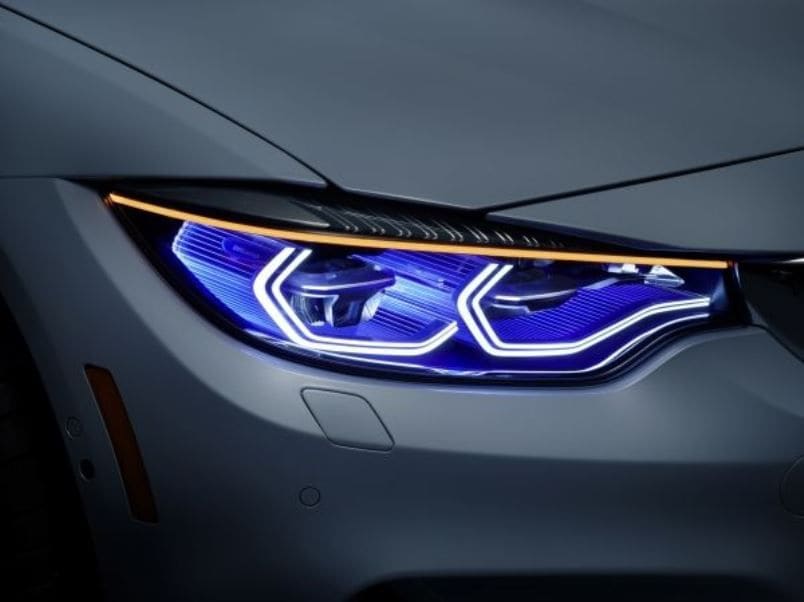
bmw laser headlights
Automotive lighting has changed significantly in the past 130 years, evolving into one of the most sophisticated, and expensive, components of today’s vehicles. Early headlights focused a small flame of fire, an innovation shared with coal miners, but the most advanced technology now available—lasers— was until recently pure science fiction.
Acetylene Gas Lamps
The first automotive headlights, dating back to the 1880s, were modified gas lamps that create light by burning acetylene gas formed by the chemical reaction of calcium carbide and water. The lights, also known as carbide lamps, hold a reservoir to slowly drip water into a container containing calcium carbide pellets. The resulting chemical reaction generates the acetylene gas, which burns brightly in front of a large polished mirror to illuminate the path ahead. While innovative at the time, the lamps were large, flickered annoyingly, and required maintenance (a messy lime residue was left when the pellets were used up). The only way to view an acetylene headlamp today is to check out an antique car.
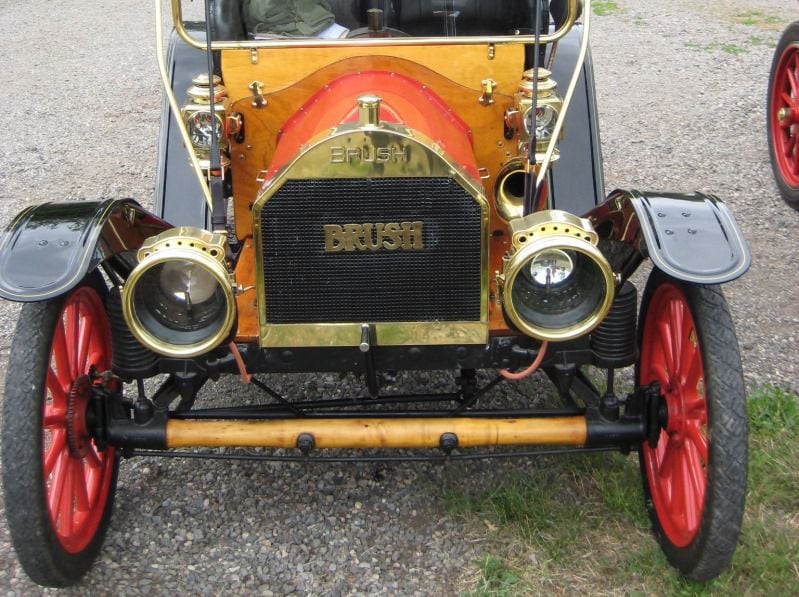
Incandescent Tungsten
The ubiquitous “turn-of-the-century” bulb, often credited to inventor Thomas Edison, passes electricity through a thin tungsten filament. The filament, encased in an atmosphere of argon and/or nitrogen by a sealed glass envelope, heats while hot (4500° F) and emits light in a process called incandescence. The light is bright, but it tends to emit towards the yellow side of the color scale (more specifically, 2700° Kelvin). This 100-year-old technology creates bulbs with a lifespan of about 800 hours before the filament thins to the point of breaking. Unfortunately, tungsten bulbs are rather inefficient, as they generate more infrared heat than visible light. While the technology is not obsolete (many homes still use incandescent light bulbs), there are no late-model cars offered with tungsten headlamps.
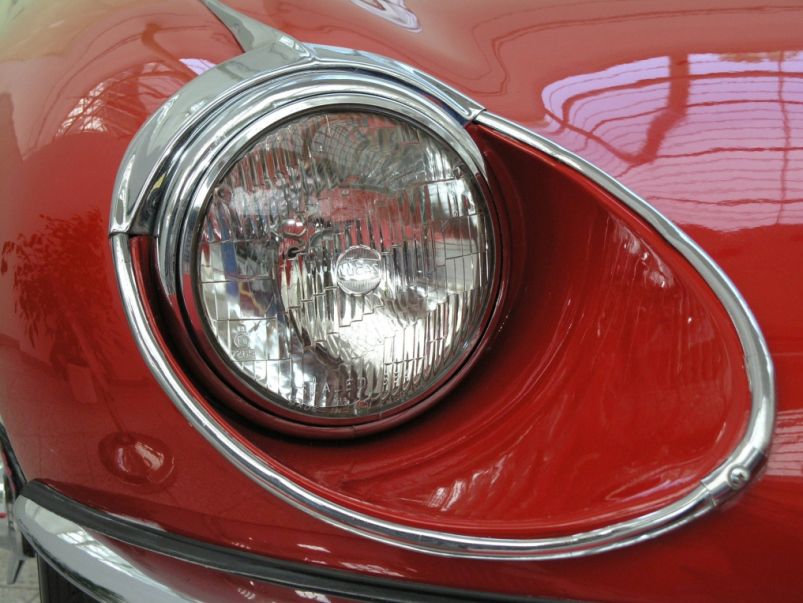
Incandescent Halogen Headlights
A halogen lamp also uses a tungsten filament, but it is surrounded by a much smaller quartz envelope (a glass bulb would melt). The gas inside the bulb is halogen—a gas that combines with the atoms of the evaporating tungsten and re-deposits them back on the filament! This recycling action allows the bulb to last much longer than the tungsten counterpart. Halogen bulbs also run hotter, therefore emitting more light that is whiter on the color scale (3100° Kelvin). Halogen bulbs last much longer than tungsten, but they also run much hotter physically (the quartz surface can approach 1200° F!). Since their quartz lens is exposed to such intense heat, contaminants on the surface of the bulb (such as fingerprints) can create “hot spots” and cause the bulb to fail prematurely, explaining why gloves are required when changing bulbs. Many of today’s new cars, including the Hyundai Sonata, Ford Escape, and Buick Verano are equipped with halogen headlights.
The era of halogen headlights also introduced the projector beam lens, which uses a bulb-shaped lens (much like a movie projector) to focus the light down the road. This design is much more effective than a simple reflector, which tends to scatter light and introduce glare.
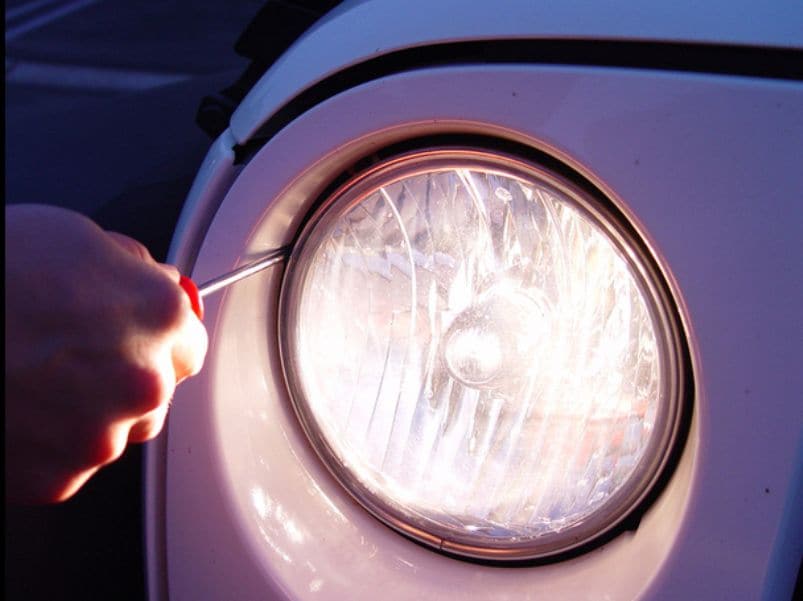
Xenon HID LIghts
The bluish-white glare you see on high-end cars is from a light technology that uses no filament. These High-Intensity Discharge (HID) bulbs create light by exciting high-pressure gas—actually a mixture of xenon gas, mercury, and metal halide salts—between charged electrodes. As the mixture takes time to warm up, high-voltage ballasts kick-start the gas into white-hot plasma in seconds. The resulting light nearly matches sunlight in color (4300° Kelvin). Light output is three times that of halogen, and as an added benefit the “ignited” gas uses very low voltage, actually reducing the load on a vehicle alternator. Xenon bulb life is approximately 3,000 hours, so they can last the life of the vehicle. (To reduce costs, some automakers combine xenon low beams with halogen high beams. Bi-xenon systems use xenon on both low and high settings.) Today, xenon bulbs are standard equipment on several premium vehicles, such as the Subaru Legacy 3.6R, Honda Odyssey Touring Elite, and Ford Mustang, and they are offered as an option on many others.
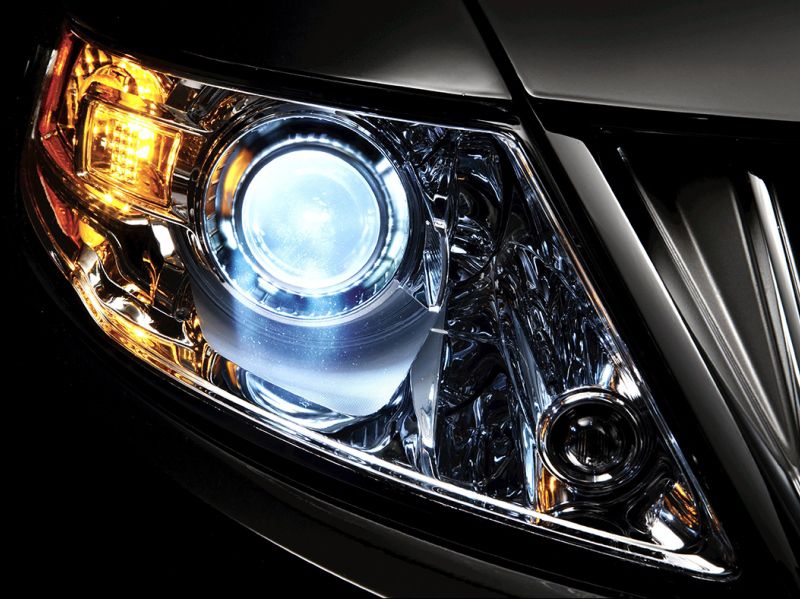
LED Headlights
Lexus introduced light-emitting diode or LED, headlights on its LS 600h in 2008. This technology uses semiconductors, not filaments or gas, to produce brilliant light through electroluminescence. LEDs are small, electrically efficient, and easily manufactured to a specific color to exactly replicate daylight. Best of all, they contain no ballast or moving parts and so are virtually impervious to vibration—their service life may exceed that of the vehicle. The advantages are many, but there are a few downsides. First, LEDs are temperature sensitive (they must be kept cool), and they produce very little infrared heat in front of the beam, meaning they are unable to thaw ice and snow from an exposed headlight lens. Plus, the technology is still expensive; it is often reserved for premium vehicles. Toyota recently broke down the price barrier by offering LED headlights as standard equipment on its Corolla in 2014.
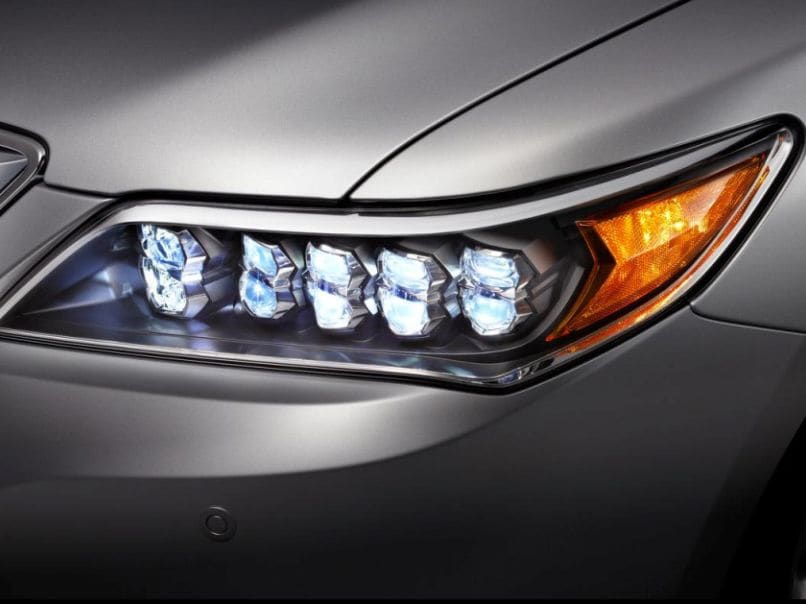
Laser Headlights
The latest, and by far the most innovative, type of headlight technology utilizes lasers—actually, several of them—to illuminate the road. Each headlight unit contains a cluster of blue lasers, which are aimed through a lens filled with yellow phosphorus to emit a brilliant white light out the other side. A series of reflectors focus the beam ahead of the vehicle. According to scientists, the illuminating power of lasers is about 1,000 times that of LED, and they only use about half of the power, which makes them particularly appealing to owners of electric vehicles. These qualities, combined with the fact that they are compact in size and reliable, makes laser headlights extremely promising. Unfortunately, the U.S. government has yet to certify them for use in the States. Only the 2015 BMW i8, sold in Europe, is currently offered with laser headlights. Audi and others aren’t far behind.
